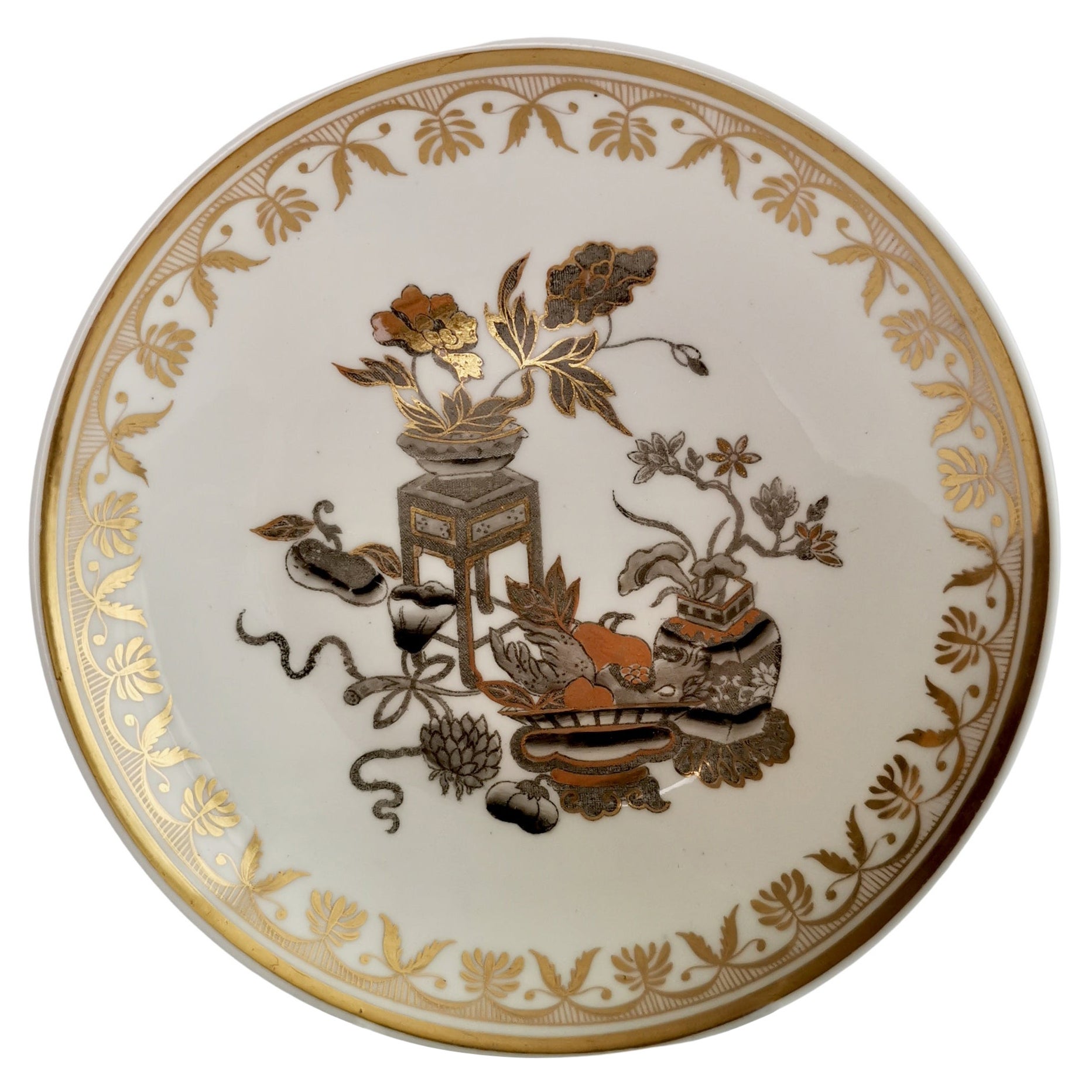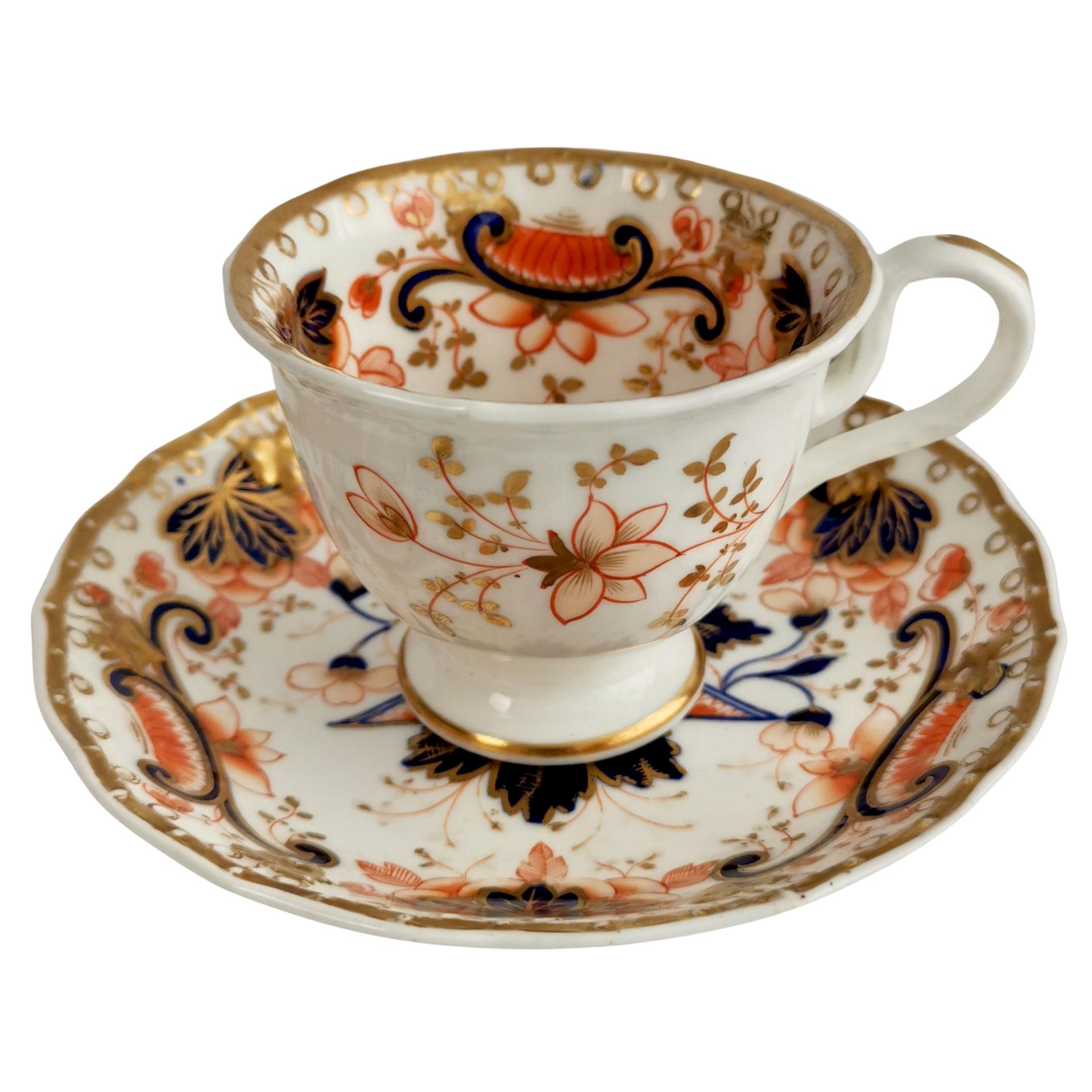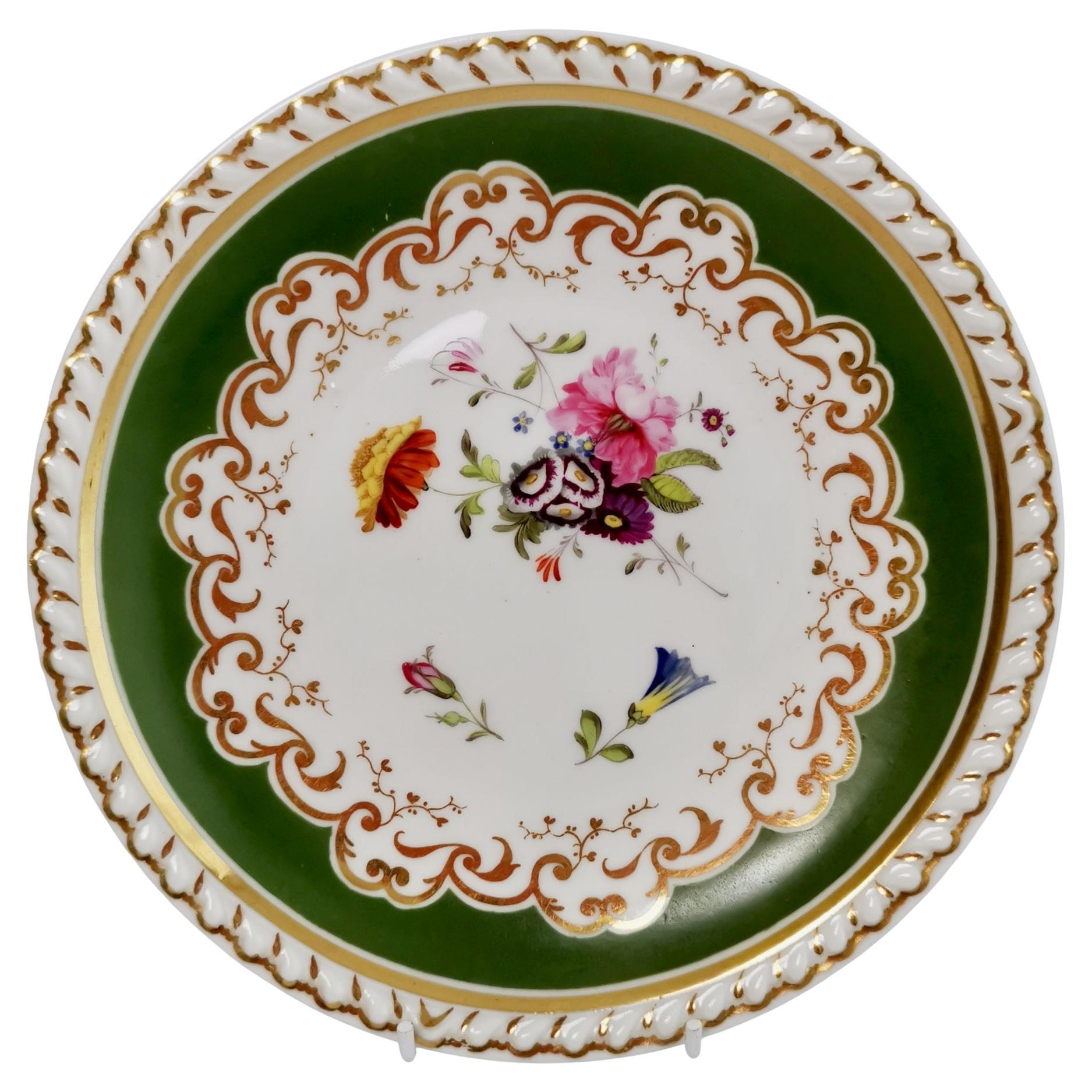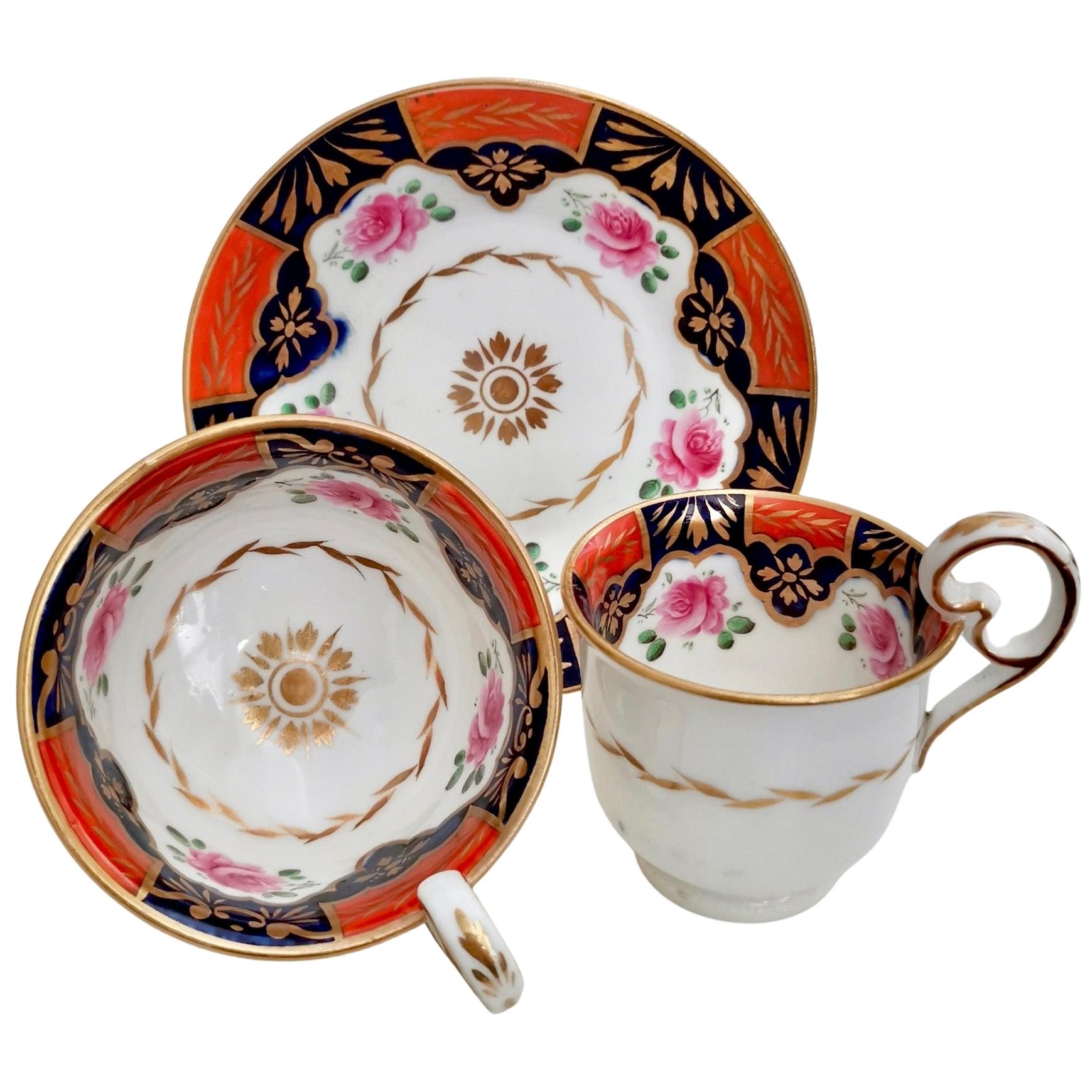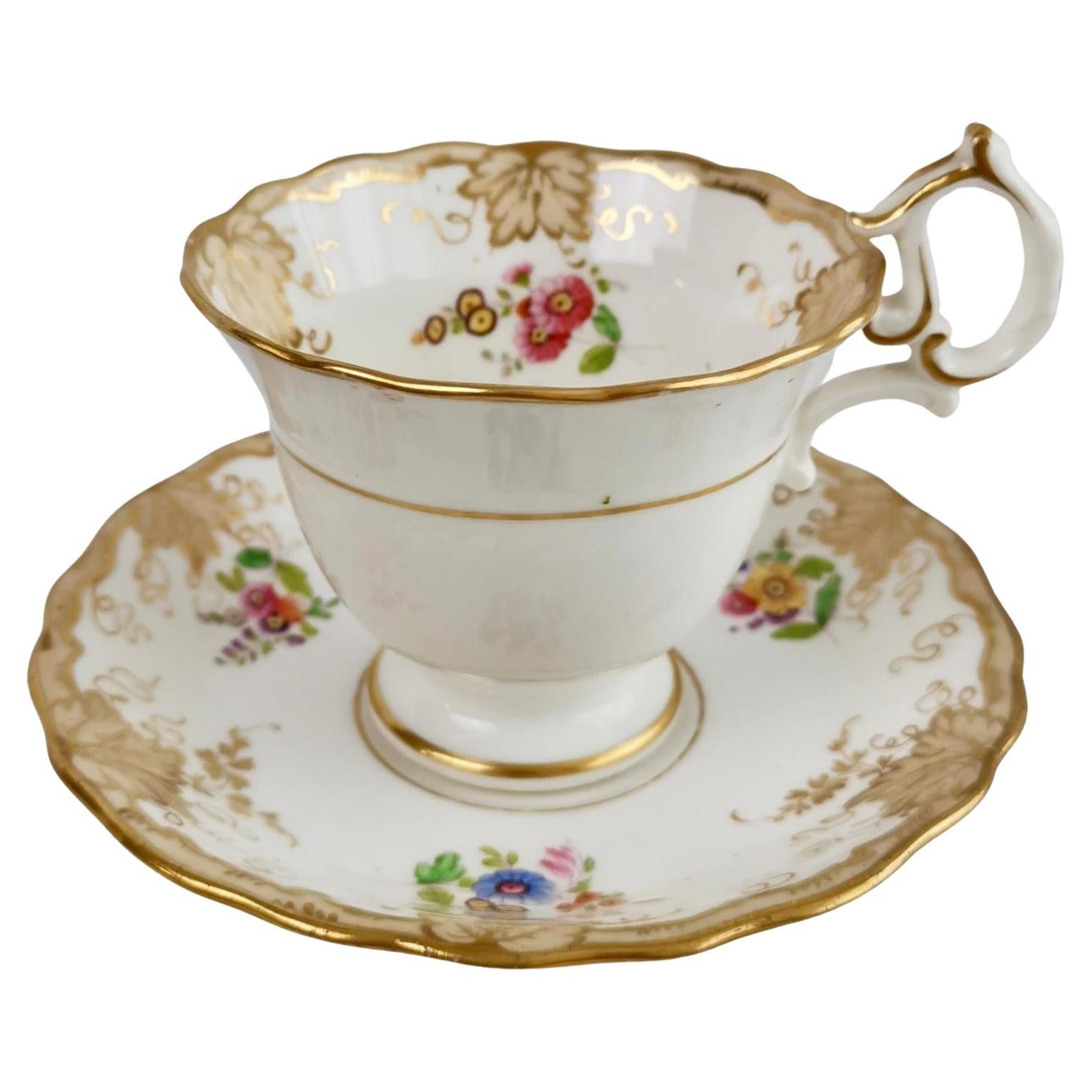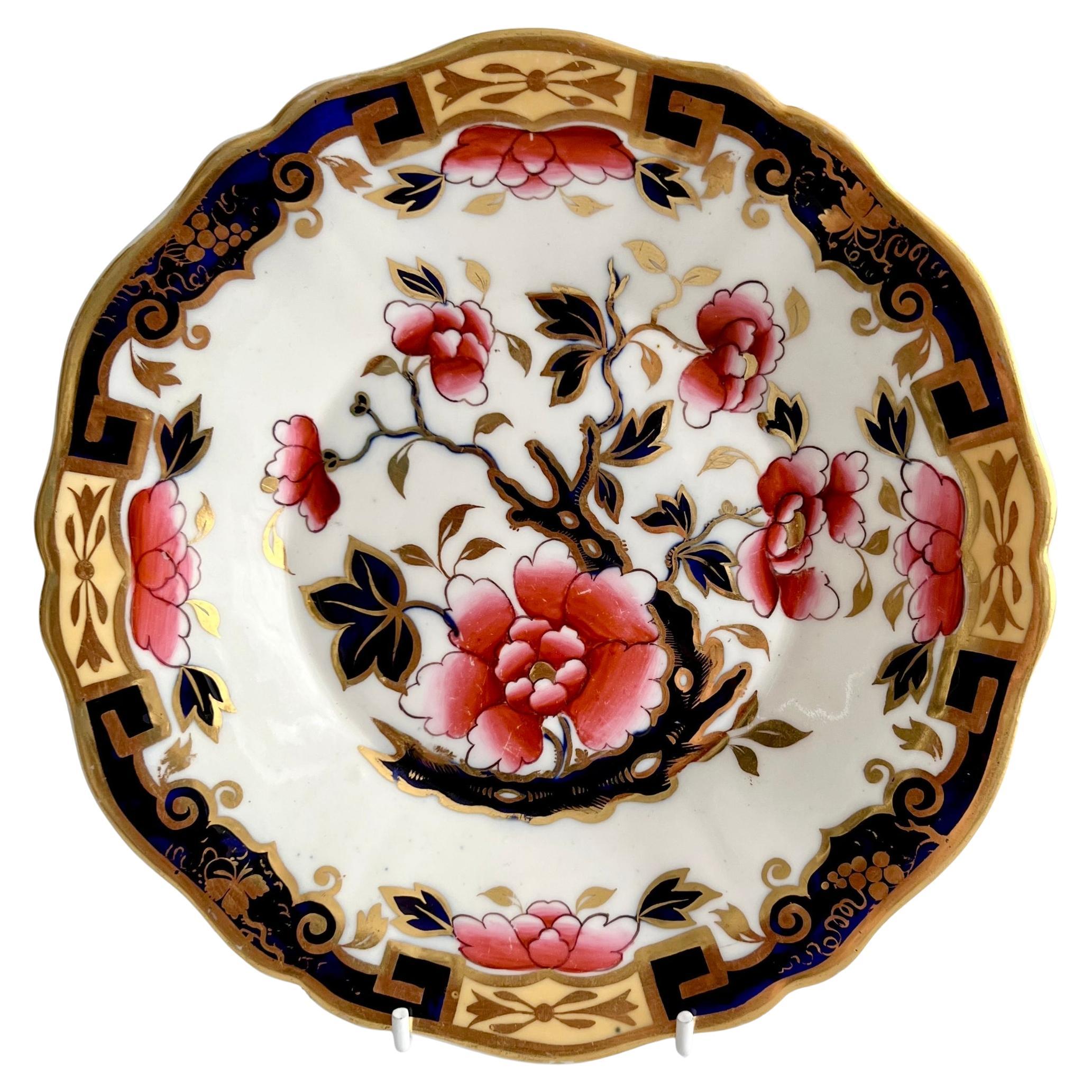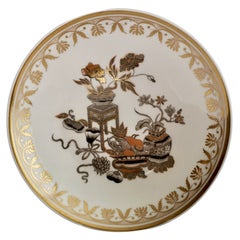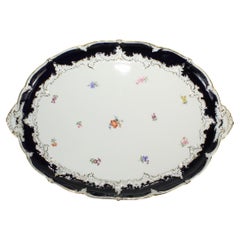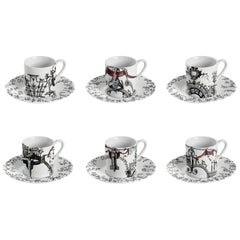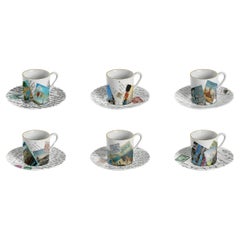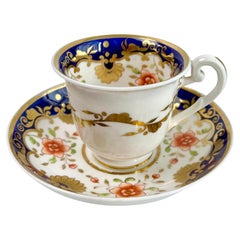
Ridgway Coffee Cup, Cobalt Blue with Orange Flowers, Regency ca 1820
View Similar Items
Want more images or videos?
Request additional images or videos from the seller
1 of 14
Ridgway Coffee Cup, Cobalt Blue with Orange Flowers, Regency ca 1820
About the Item
- Creator:Ridgway Porcelain (Maker)
- Dimensions:Height: 1 in (2.54 cm)Width: 1 in (2.54 cm)Depth: 1 in (2.54 cm)
- Sold As:Set of 2
- Style:Regency (Of the Period)
- Materials and Techniques:
- Place of Origin:
- Period:
- Date of Manufacture:circa 1820
- Condition:Wear consistent with age and use. In perfect antique condition without any damage, repairs or crazing, and only some minimal wear.
- Seller Location:London, GB
- Reference Number:Seller: A-RID86b1stDibs: LU4805131034702
About the Seller
5.0
Gold Seller
These expertly vetted sellers are highly rated and consistently exceed customer expectations.
Established in 2016
1stDibs seller since 2019
208 sales on 1stDibs
Typical response time: 1 hour
More From This SellerView All
- Ridgway Porcelain Teacup and Saucer, Blue Flowers and Gilt, Regency, Ca 1825By Ridgway PorcelainLocated in London, GBThis is a beautiful teacup and saucer made around 1825 by Ridgway. It is decorated with the very popular pattern no. 2/1000: a cobalt blue ground with rich gilding and monochrome blu...Category
Antique 1820s English Regency Tea Sets
MaterialsPorcelain
$340 Sale Price / set20% OffFree Shipping - Spode Orphaned Porcelain Saucer, Chinoiserie Gilt Potted Flowers, Regency ca1820By SpodeLocated in London, GBThis is a beautiful deep orphaned saucer made by Spode around 1820. The saucer is decorated with a gorgeous Chinoiserie pattern of a group of potted flowers in gilt and grey. The sau...Category
Antique 1820s English Regency Porcelain
MaterialsPorcelain
$200 Sale Price20% OffFree Shipping - Swansea Porcelain Tea Set, Tea & Breakfast Cup White and Gilt, Regency ca 1820By Swansea PorcelainLocated in London, GBOn offer is a beautiful porcelain tea set made by Swansea around the year 1820, which was the Regency era. The set consists of a white and gilt decorated teacup and a larger "breakfa...Category
Antique 1820s Welsh Regency Tea Sets
MaterialsPorcelain
$731 Sale Price / set25% OffFree Shipping - Samuel Alcock Porcelain Coffee Cup, Orange Imari Flowers, Rococo Revival ca 1830By Samuel Alcock & Co.Located in London, GBThis is a beautiful coffee cup and saucer made by Samuel Alcock around 1830, which was the Rococo Revival era. The set is decorated with a bold Imari pattern and has a "ring-moulded" shape. Samuel Alcock was one of the many potters in Staffordshire such as Spode, Coalport, H&R Daniel and many others during the 1830s and 1840s. He was perhaps not the most well-known of potters but produced very high quality wares and original designs, often standing out for their bright choice of colours and beautiful shapes. The Alcock factory is not well documented so although they had a huge output, items are often mis-identified and we don't know much about the production process of artists, even though the wares have a very high quality that equals that of the more well known factories. The Rococo style was originally a style of the 18th Century. After the Baroque style, which was highly symmetrical and well-designed as it aimed to express the perfection of God, the Rococo style was a reaction that expressed the unpredictability and flow of nature. "Rococo" is derived from the French word "rocaille", which stands for a mass of pebbles that are self-organised in a completely unpredictable mess, for instance on the beach or in the mountains. Rococo moved away from the stranglehold that religion had on the arts: it was capricious, asymmetrical, charming and worldly. As Europe got mired in various wars between Germany, France and Britain, the general style got much more austere again and people embraced neo-classicism. But in the 1830s and 1840s, the seemingly unlimited fortunes of the Industrial Revolution sparked a revival of Rococo, once again creating natural shapes that are not always symmetrical and don't particularly make rational sense. This coffee cup can...Category
Antique 1830s English Rococo Revival Tea Sets
MaterialsPorcelain
$264 Sale Price / set20% OffFree Shipping - Ridgway Porcelain Plate, Green with Hand Painted Flowers, Regency ca 1825By Ridgway PorcelainLocated in London, GBThis is a very beautiful plate made by Ridgway around 1825, which is known as the Regency period. The plate has a deep green ground and hand painted flowers, and would have formed pa...Category
Antique 1820s English Regency Dinner Plates
MaterialsPorcelain
$280 Sale Price20% OffFree Shipping - Spode Porcelain Teacup Trio, Lavender Blue with Flower Sprays, Regency ca 1815By SpodeLocated in London, GBThis is a beautiful "true trio" consisting of a teacup, a coffee cup and a saucer, made by Spode in about 1815. It is decorated with pattern 2234 with a striking lavender or periwinkle blue border and finely painted flower sprays. In the late 18th and early 19th Century a "true trio" is how cups and saucers were sold; as you would never drink tea and coffee at the same time, why invest in an extra saucer? Josiah Spode was the great pioneer among the Georgian potters in England. Around the year 1800 he perfected the bone china recipe that has been used by everyone ever since, and he was also the leading potter behind the technique of transferware, making it possible for English potters to replace the import of Chinese china that had come to an end around that time, with their own. This was fundamental to a thriving industry that would last for about 150 years and provide half the world with their tableware. This set is made in the famous "London" shape, which was brought out by Spode in 1812 and was quickly copied by all other makers. It then remained the most popular shape for about 10 years. The set is potted in fine white porcelain - by the year 1810 Spode had perfected his recipe for bone china and it became beautifully smooth, white, thin and translucent. All three items are marked with the red hand painted SPODE mark and the pattern number 2234. CONDITION REPORT The set is in excellent antique condition without any damage, repairs or crazing. There is some minimal wear as visible in the pictures...Category
Antique 1810s English Regency Porcelain
MaterialsPorcelain
$400 Sale Price / set20% OffFree Shipping
You May Also Like
- Antique Meissen Porcelain Tea Tray with Cobalt Blue Border & Spray FlowersBy Meissen PorcelainLocated in Philadelphia, PAA fine antique porcelain tea tray or serving platter. By Meissen. With a scalloped rim and a rich cobalt blue border. There are hand paint...Category
20th Century German Tea Sets
MaterialsPorcelain
- Pompei, Six Contemporary Decorated Coffee Cups with PlatesBy Vito NestaLocated in Milano, LombardiaThe porcelain collection Pompei by Grand Tour By Vito Nesta brings the Grottesche wall decoration back to life in a contemporary key. Ancient designs are taken and declined on the di...Category
2010s Italian Porcelain
MaterialsPorcelain
- Corrispondenze, Six Contemporary Decorated Coffee Cups with PlatesBy Vito NestaLocated in Milano, LombardiaVito Nesta Grand Tour's "Corrispondenze" collection is a portrait of what we carry with us after every journey we make in the world. Images, colo...Category
2010s Italian Porcelain
MaterialsPorcelain
- Berlin KPM Porcelain Five-Piece Cobalt-Blue and Parcel-Gilt Coffee SetBy Kerafina Royal Porzellan KPMLocated in Los Angeles, CAA very fine 19th century Berlin KPM Porcelain Royal five-piece cobalt-blue and 24-carat gold parcel-gilt coffee set. The finely painted and decorated two-serving suite comprising of ...Category
Antique Late 19th Century German Empire Revival Tea Sets
MaterialsPorcelain
$4,250 Sale Price / set43% Off - Le Volte Celesti, Six Contemporary Decorated Coffee Cups with PlatesBy Vito NestaLocated in Milano, LombardiaFrom the encounter between the historical archives of the Duomo di Milano and the imagery of Grand Tour by Vito Nesta, this unique collections of porcelains...Category
2010s Italian Porcelain
MaterialsPorcelain
- Cabinet de Curiosités, Six Contemporary Decorated Coffee Cups with PlatesBy Vito NestaLocated in Milano, LombardiaThe cabinet de Curiosités collection takes inspiration from the rooms of the same name which in the sixteenth century collected objects and subjects of various kinds. In this collect...Category
2010s Italian Porcelain
MaterialsPorcelain
Recently Viewed
View AllMore Ways To Browse
Porcelain English Tea Pot
2 Handle Tea Cups
Cobalt Blue Glass Tea Set
Toilet Set
Antique Porcelain Dinnerware
Porcelain Dinnerware Blue
Minton Cup
Minton Cups
Minton Tea Set
Coalport Dinner Set
Chinese Porcelain Dinnerware Sets
E Ridgway
Coalport Tea Set
Antique English Cup And Saucer
Antique Spode Imari
Spode Imari
Antique Dinnerware Patterns
Flower Pot With Saucer

